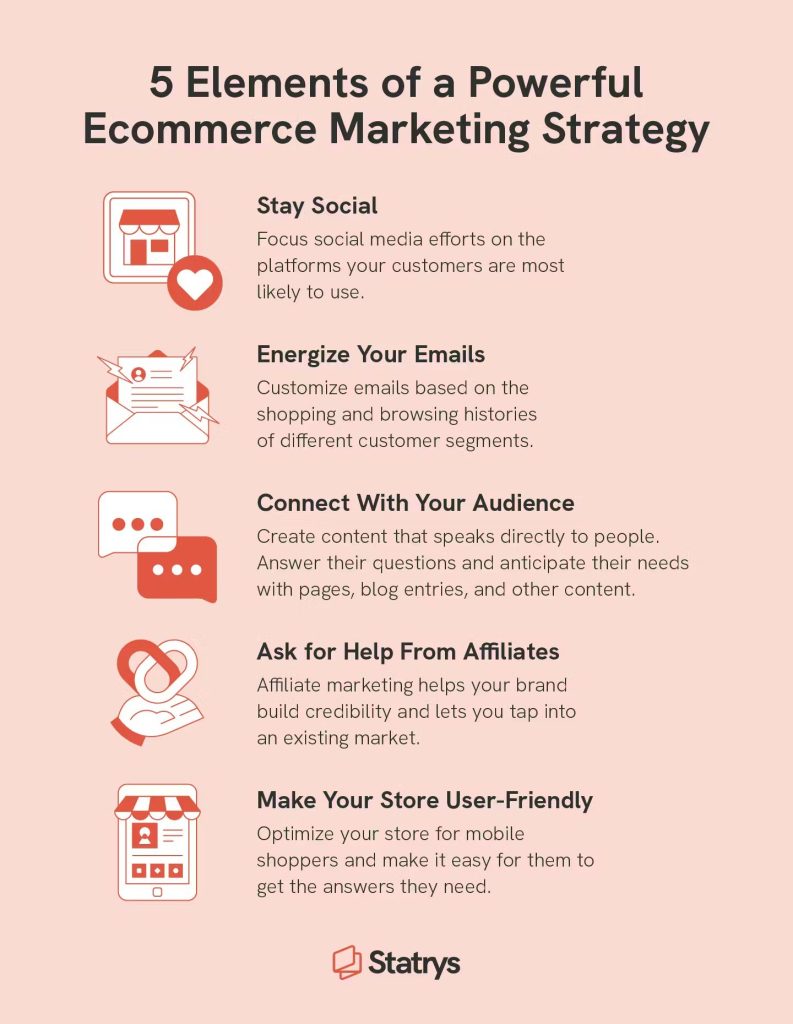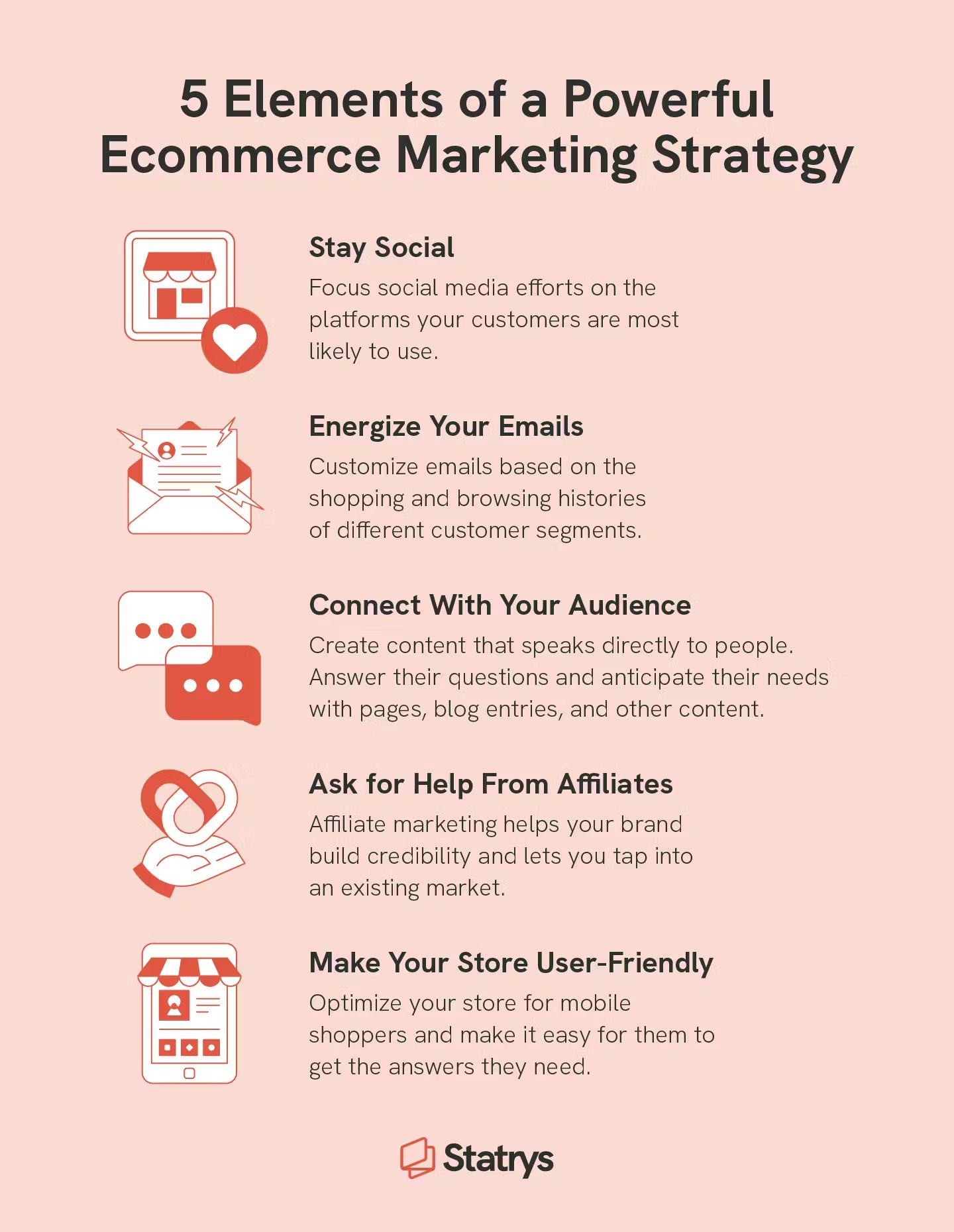Selling across multiple e-commerce platforms, like Amazon, eBay, Shopify, and Etsy, can significantly expand your business’s reach and boost sales. However, managing multiple stores effectively requires organization, streamlined processes, and the right tools. Here are some essential tips for efficiently managing multiple e-commerce platforms.

1. Centralize Inventory Management
Inventory management is one of the most challenging aspects of multichannel e-commerce. To avoid overselling or stockouts, invest in an inventory management system that can synchronize inventory across all platforms.
- Use Inventory Management Software: Tools like TradeGecko, Zoho Inventory, and Sellbrite allow you to monitor inventory levels, set low-stock alerts, and automatically update inventory across platforms.
- Real-Time Synchronization: Choose a system that offers real-time inventory updates to ensure accurate stock levels across all channels.
- Set Inventory Buffers: Maintain a small buffer of stock for each product to account for unexpected spikes in demand or errors in inventory syncing.
Benefit: Centralized inventory management reduces the risk of overselling, prevents stockouts, and ensures consistent product availability across all platforms.
2. Standardize Product Listings Across Platforms
Having consistent product listings across all platforms creates a uniform brand experience and simplifies management. Ensure that product titles, descriptions, images, and specifications are consistent but optimized for each platform’s unique requirements.
- Optimize Listings for Each Platform: Different platforms have different algorithms and listing requirements. Research SEO best practices for each platform, such as keyword optimization for Amazon versus eBay.
- Use Listing Tools: Tools like Listing Mirror and ChannelAdvisor can help you create listings, optimize content, and distribute them across platforms.
- Create Templates for Consistency: Develop templates for product descriptions, images, and specs to make listing creation easier and more uniform.
Benefit: Standardized product listings build brand consistency and make it easier to track and manage your products across platforms.
3. Automate Order Processing and Fulfillment
With multiple platforms to monitor, it’s essential to automate as much of the order processing and fulfillment as possible. This helps reduce the time and effort required to handle each order and improves customer satisfaction with faster shipping.
- Order Management Software: Tools like ShipStation, Ordoro, and ShipBob automatically import orders from all platforms and streamline the fulfillment process.
- Automate Shipping Labels: Generate shipping labels automatically based on the order’s destination and product weight, and streamline returns as well.
- Use a Fulfillment Service: Consider a fulfillment service like Amazon FBA, ShipMonk, or Red Stag Fulfillment to handle picking, packing, and shipping on your behalf.
Benefit: Automation ensures orders are processed efficiently, reducing errors and time spent on repetitive tasks, and providing faster delivery for customers.
4. Integrate All Channels with a Unified Dashboard
A unified dashboard helps you monitor sales, track orders, manage inventory, and view performance metrics from a single interface, providing a comprehensive overview of your e-commerce business.
- Multi-Channel Management Tools: Platforms like Ecomdash, Linnworks, and ChannelAdvisor integrate multiple sales channels into one dashboard, making it easy to monitor and manage.
- Customizable Reports: Look for dashboards that offer customizable reports, allowing you to view key metrics across all channels.
- Mobile Access: Ensure that the dashboard is accessible on mobile devices, allowing you to manage your business on the go.
Benefit: A unified dashboard centralizes management and provides a holistic view of your business, improving decision-making and reducing the time spent switching between platforms.
5. Consolidate Customer Communication and Support
Managing customer inquiries, returns, and reviews across multiple platforms can quickly become overwhelming. Consolidate customer support channels to keep all customer communications in one place.
- Use a Helpdesk Platform: Tools like Gorgias, Zendesk, and Freshdesk allow you to manage customer messages, questions, and reviews from multiple channels in one inbox.
- Automate FAQ Responses: Set up automated responses for common questions to reduce response time.
- Respond Promptly and Consistently: Ensure you monitor customer feedback, reviews, and inquiries on all platforms and respond quickly to maintain high customer satisfaction.
Benefit: Centralized customer support makes it easier to manage inquiries and maintain consistent communication across all platforms, building customer trust and loyalty.
6. Analyze and Compare Performance Across Platforms
Tracking the performance of each platform helps you identify which channels are most profitable and which require adjustments. Analyzing metrics like sales, conversion rates, and customer engagement provides insights to improve your strategy.
- Performance Tracking Tools: Tools like Google Analytics and Databox help track metrics across channels, from conversion rates to revenue and customer behavior.
- Run Split Tests: Test different listing strategies, promotions, and product images on each platform to determine which performs best.
- Evaluate ROI: Regularly review the ROI of each platform, including costs, to focus on the most profitable channels.
Benefit: Performance tracking allows you to make data-driven decisions, allocate resources effectively, and maximize revenue across channels.
7. Use Social Media to Support All Platforms
Social media marketing can drive traffic to all your e-commerce platforms, helping to increase brand visibility and reach a wider audience. Use social media to promote products, share customer reviews, and engage followers with sales or promotions.
- Cross-Promote Platforms: Share links to your products across all social media platforms to increase visibility.
- Engage with Followers: Respond to comments and questions, and build a community around your brand.
- Use Paid Advertising: Consider running ads on Facebook, Instagram, or Pinterest to drive traffic to your stores.
Benefit: Social media marketing supports all your e-commerce platforms, increasing traffic, brand awareness, and potentially boosting sales.
8. Implement Consistent Pricing Strategies
Inconsistent pricing across platforms can confuse customers and damage your brand’s credibility. Develop a pricing strategy that maintains consistency while considering platform fees, shipping costs, and competitor prices.
- Use Dynamic Pricing Tools: Tools like RepricerExpress and Informed.co automatically adjust prices based on demand, competitor pricing, and inventory levels.
- Offer Platform-Specific Promotions: If certain platforms allow for discounts or promotions, ensure these are reflected consistently across all channels.
- Account for Fees and Costs: Adjust pricing to cover platform-specific fees and shipping costs to maintain profitability.
Benefit: Consistent pricing across platforms builds trust, maintains brand integrity, and improves customer loyalty.
9. Develop a Clear Branding Strategy
Building a strong brand identity that resonates across multiple platforms is essential for consistency and customer loyalty. Your logo, voice, color scheme, and messaging should remain cohesive, regardless of where customers find you.
- Create a Brand Style Guide: Develop guidelines for your brand’s voice, tone, color scheme, logo usage, and messaging to ensure consistency.
- Use the Same Visual Elements: Use consistent imagery, fonts, and logos across platforms.
- Tell Your Brand Story: Share your brand’s mission, story, and values consistently across platforms to create a memorable experience.
Benefit: A cohesive brand image makes your business more recognizable and memorable, increasing customer trust and loyalty.
10. Streamline Accounting and Finances
Keeping track of sales, expenses, and taxes from multiple platforms can be complex. A centralized accounting system simplifies this process and helps ensure your business remains financially healthy.
- Accounting Software: Tools like QuickBooks, Xero, and A2X integrate with e-commerce platforms, automatically importing transactions, expenses, and tax information.
- Automate Tax Calculations: Use tax calculation tools that integrate with each platform to ensure accuracy, particularly if you’re selling internationally.
- Generate Regular Reports: Track revenue, expenses, and profit from each platform to evaluate performance and make financial decisions.
Benefit: Streamlined accounting reduces errors, simplifies tax compliance, and gives you a clear picture of your overall profitability.
Conclusion
Managing multiple e-commerce platforms can be complex, but with the right tools, organization, and strategies, you can streamline operations and drive sales across channels. By centralizing inventory, optimizing product listings, automating order processing, and monitoring performance, you can efficiently expand your business and reach new audiences. An efficient multichannel approach allows you to maximize revenue, enhance customer satisfaction, and grow your brand presence across the digital marketplace.








